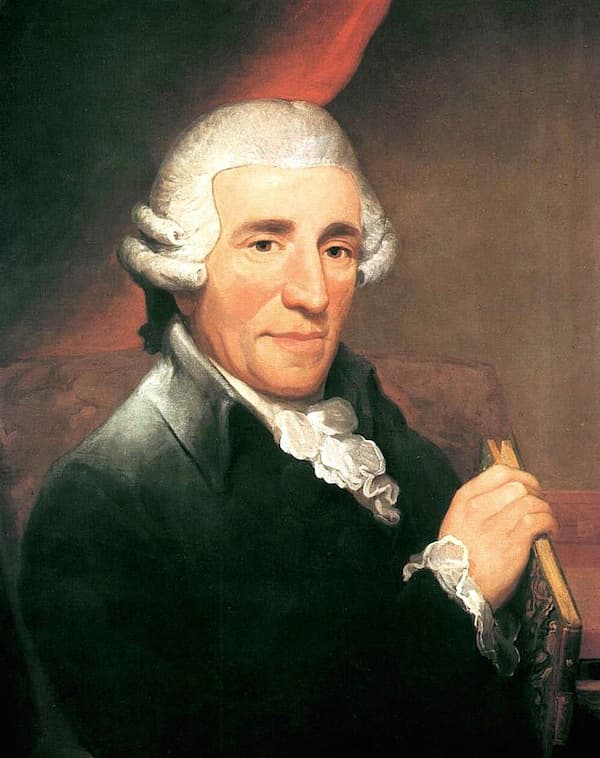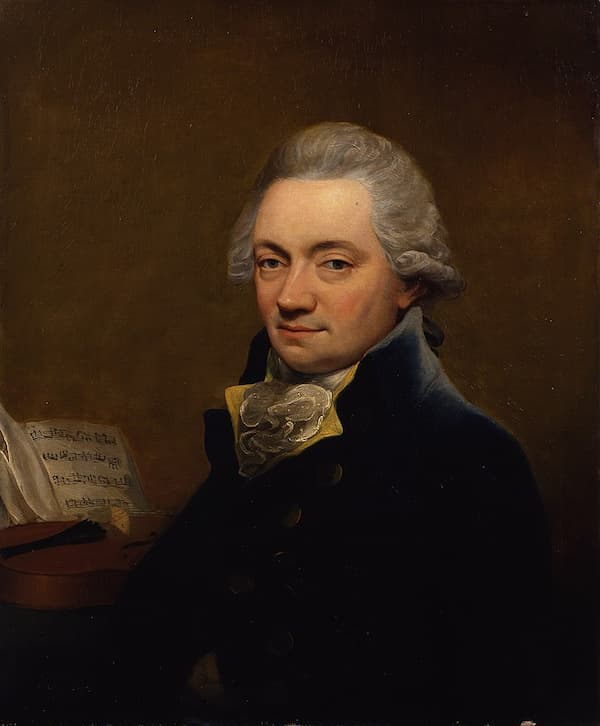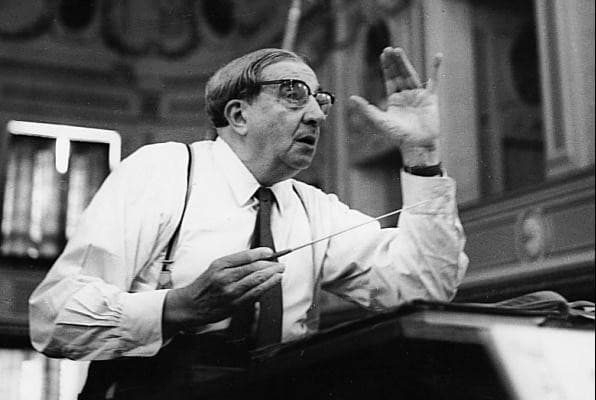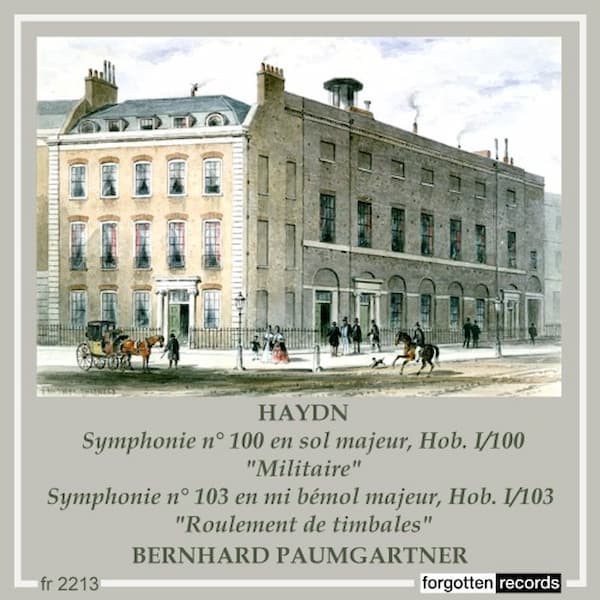by Maureen Buja, Interlude

Thomas Hardy: Haydn, 1791 (London: Royal College of Music)
He had been commissioned by Johann Peter Salomon to write 6 new symphonies for the start of Salomon’s new subscription season. Haydn had met Salomon when the impresario met him in Vienna and succeeded in getting him to travel to England, first in 1791—1792 and then in 1794–1795. The acquaintance suited both – Haydn needed the exposure, and Salomon needed material for his concerts. For Salomon and London, Haydn wrote 12 symphonies (Nos. 93 to 104), first known as the Salomon Symphonies and now as the London Symphonies.

Thomas Hardy: Johann Peter Salomon, ca 792 (London: Royal College of Music)
Symphony No. 100 in G major was played on 31 March 1794 in the Hanover Square Rooms, i.e., in the heart of fashionable London. The original title for the work was the Grand Military Overture, due to the use of kettledrums and other percussion in the second movement. The end of the last movement sees the reappearance of the kettledrums and military percussion, tying the work together.
The final movement is a rondo, and the recurring main theme became widely popular in England, where it would appear as a dance theme in ballrooms around the country, anxious to reflect what was happening in London.
This recording was made in 1960, with Bernhard Paumgartner leading the Camerata Academica of the Salzburg Mozarteum.

Bernhard Paumgartner
Bernhard Paumgartner (1887–1971) was a leading Austrian composer, conductor, and musicologist. He taught at the Mozarteum in Salzburg, where he was Herbert von Karajan’s composition teacher and brought out his conducting skills. He was an important musical focus for the city, being one of the founders of the Salzburg Festival.
The Mozarteum Orchestra Salzburg has a very direct connection with the Mozart family – it was founded in 1841 with the help of Wolfgang’s widow Constanze and his sons, Franz Xaver and Karl Thomas, as part of the Cathedral Music Association and Mozarteum that Constanze was promoting. The orchestra was named the Mozarteum Orchestra in 1908.

Performed by
Bernhard Paumgartner
Camerata Academica du Mozarteum de Salzbourg
Recorded in 1960
Official Website
For more of the best in classical music, sign up for our E-Newsletter
